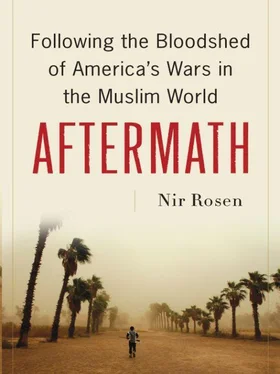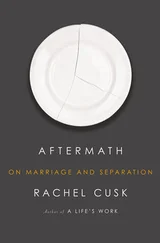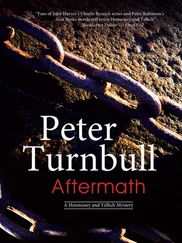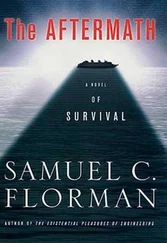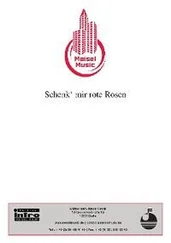Shortly after the Samarra attacks I spoke to a Shiite friend from Maalif. “The Mahdi Army is cleansing my neighborhood,” he said, “and they issued threats to many Sunni families forcing them to leave. They also killed many Sunnis. It started after the death of more than fifty civilians in the neighborhood in one day [mortar attacks from Gartan] and another sequence of explosions including two car bombs and several IEDs. The Sunnis in the neighborhood were about 40 percent, and now they are about 20 percent. Only Sunnis who are not involved in the insurgency or were not from the former regime did not receive threats, and so they did not leave the city. Rent prices for houses went down. Sunnis who have Shiite friends in other neighborhoods started switching their houses. Shiite families move to majority-Shiite neighborhoods, and Sunni families move to majority-Sunni neighborhoods. They exchange houses for free but with trust that they will get their houses back. This leads to changing the demography of every neighborhood.”
Every morning in 2006 the streets of Baghdad were littered with dozens of bodies, bruised, torn, mutilated, executed only because they were Sunni or Shiite. Power drills were an especially popular torture device. In the spring of 2006 I spent six weeks in Iraq and went through three different drivers. At various times each had to take a day off because a neighbor or relative had been killed. One morning fourteen bodies were found, all with ID cards in their front pockets, all called Omar. Omar is an exclusively Sunni name. It was a message. In Baghdad those days nobody was more insecure than men called Omar. On another day a group of bodies was found with hands overlapping on their abdomens, right hand above left, the way Sunnis pray. It was a simple message: if you are Sunni, we will kill you. Sunnis and Shiites were obtaining false papers with neutral names. Sunni militias were stopping buses and demanding the jinsiya, or ID cards, of all passengers. Those belonging to Shiite tribes were executed.
Following the January 2005 elections the Health and Transportation ministries were given to Sadr loyalists, who immediately started cleansing them of Sunnis and ideologically unsound Shiites. Sadrists instituted a program they called “cleaning the ministry from Saddamists.” Although not all Sunnis were targeted, many Sunnis felt that all Sunnis were being labeled Saddamists.
In the Health Ministry pictures of Muqtada and his father were everywhere. Black banners for Shiite traditions were all over the walls, and Shiite traditional music played inside the ministry. Only people who supported the Sadr movement could join the ministry now. Doctors and ministry employees referred to the minister of health as imami , or “my imam,” as though he were a cleric. What Sunnis were left in the ministry worked only in Sunni areas where Shiites were afraid to visit. The Transportation Ministry was also controlled by clerics. Its walls were adorned with Shiite posters and banners as well as those supporting Muqtada specifically. Sunni engineers and staff were pushed out. As in the Health and Interior ministries, Shiites with no experience filled the ranks, the only qualification being an ideological one. In one case a Sunni chief engineer was fired and replaced with an unqualified Shiite who wore a cleric’s turban to work. This has led to a dramatic drop in efficiency, with ministries barely functioning. Kurdish-controlled offices also avoided hiring Sunni Arabs.
Attacks increased throughout the country. In Kirkuk the Ahl Al Bayt Huseiniya was attacked by Sunni militiamen who blocked off the street with cars and killed at least two civilians. In the nearby village of Bashir, they attacked the Shiite Imam Ridha shrine. Officially, Muqtada opposed attacks on Sunnis, but he had unleashed his fighters on Sunnis. Sectarian and ethnic cleansing continued apace, with mixed neighborhoods being purified. In Amriya, dead bodies were being found on the main street at the rate of three a day. People were afraid to approach the bodies, or call for an ambulance or the police, because they would be found dead the following day. In Abu Ghraib, Dora, Amriya, and other mixed neighborhoods, Shiites were being forced to leave. In Maalif Sunnis were being targeted. In its statements the Association of Muslim Scholars referred to the police as “government police,” not the Iraqi police, because it viewed them as illegitimate, and it called the Mahdi Army the “black sectarians” because of their uniforms, or the “new sectarians.” Iraq was a divided country, even in its media. New channels such as Al Furat, which was controlled by the Supreme Council, and Sharqiya, which was controlled by former Baathist Saad Bazzaz, continued the wars fought on the street, inflaming people’s fears and hatreds. If Sunni and Shiite militias could not assassinate political figures, they often targeted the close relatives of judges, governors, ministers, and members of the national assembly.
Shiite families fled Abu Ghraib, Al Taji, and Al Mashahada, moving into Shiite strongholds in Baghdad, such as Shuula, where Muqtada’s representatives took care of them. Shiites were still angry. “Destroying all Sunni mosques is still not equivalent to bombing the Askari shrine” was the dominant Shiite attitude in Baghdad. Hundreds of Shiite families from Sunni towns settled in Red Crescent-run refugee camps near Kut. The United States constantly shifted its support back and forth between Sunnis and Shiites, calling on Shiites to rein in their militias, a key Sunni demand, while conducting massive and lethal raids on the Sunni population—alienating everyone in Iraq but the Kurds.
In February 2006 the National Accord Front—the largest Sunni coalition, with forty-four seats in the new Parliament—threatened to begin civil disobedience if attacks and arrests targeting Sunnis were not halted. In areas where Shiites were the minority, they feared the mulathamin (masked ones), referring to the Sunni militias who covered their faces with their head scarves. Sunnis, in turn, feared “interior,” a reference to the Interior Ministry, or “the black sectarians” of the Mahdi Army.
THE CIVIL WAR IN IRAQ was a victory of the slum over the city, or the periphery over the center. The Kurds, the Shiites, and even the Sunnis of the center were marginalized or killed. For the Sunnis, for example, it was the Anbar Sunni—more rural, more tribal—who briefly rose to prominence in 2007. In Kurdistan, the pesh merga and the Kurds of the mountains have prevailed. Under Saddam there were many pro-regime, Arabic-speaking, Iraqified Kurds living in Baghdad and Mosul. They have been pushed into Kurdistan.
For those who resisted having to choose a sectarian identity, there were few choices except exile. The integrated Iraqis had been Saddam’s citizens; they were his middle class, his urban dream, and they lived in the heart of the state. Many were state employees under the direct control of the state. They were of the state’s making, and they have died with the state. Millions of Iraqis have left Iraq. More than two million Iraqis had fled before the war, in the 1990s, when the UN-imposed sanctions destroyed Saddam’s allies and his urban middle-class technocrats. Millions more have fled their homes since the war began, most of them from the mixed areas of Iraq. Many have been expelled from their urban homes by the sectarian militias who descended from the mountains, the desert, the marshes, the slums.
CHAPTER THREE
Slaughterhouse
ON MARCH 26, 2006, AMERICAN AND IRAQI FORCES RAIDED THE Mustafa Husseiniya, the small but locally well-known Shiite gathering place and place of worship in eastern Baghdad’s Ur neighborhood, adjoining the larger Shaab district. Sixteen to eighteen people were killed in the raid. A U.S. military statement issued later that day claimed that “Iraqi Special Operations Forces conducted a twilight raid in the Adhamiyah neighborhood in northeast Baghdad to disrupt a terrorist cell responsible for conducting attacks on Iraqi security and coalition forces and kidnapping Iraqi civilians,” adding that “no mosques were entered or damaged,” that the operation was conducted at dusk to “ensure no civilians were in the area and to minimize the possibility of collateral damage,” and that U.S. forces were only advising the Iraqi soldiers who conducted the raid. Some accounts claimed that American and Iraqi soldiers had been pursuing a suspect who fled to the mosque. They were fired upon and returned fire, killing sixteen “insurgents” and arresting fifteen others. It was also claimed they rescued a hostage. Former Prime Minister Ibrahim al-Jaafari of the Dawa Party angrily complained that the sixteen dead had been inside a mosque. Nuri al-Maliki, who had succeeded Jaafari as prime minister, was interviewed on Iraqi state television. “This was a hostile attack intended to destroy the political process and provoke a civil war,” he said. He blamed the American military and American ambassador Zalmay Khalilzad.
Читать дальше
